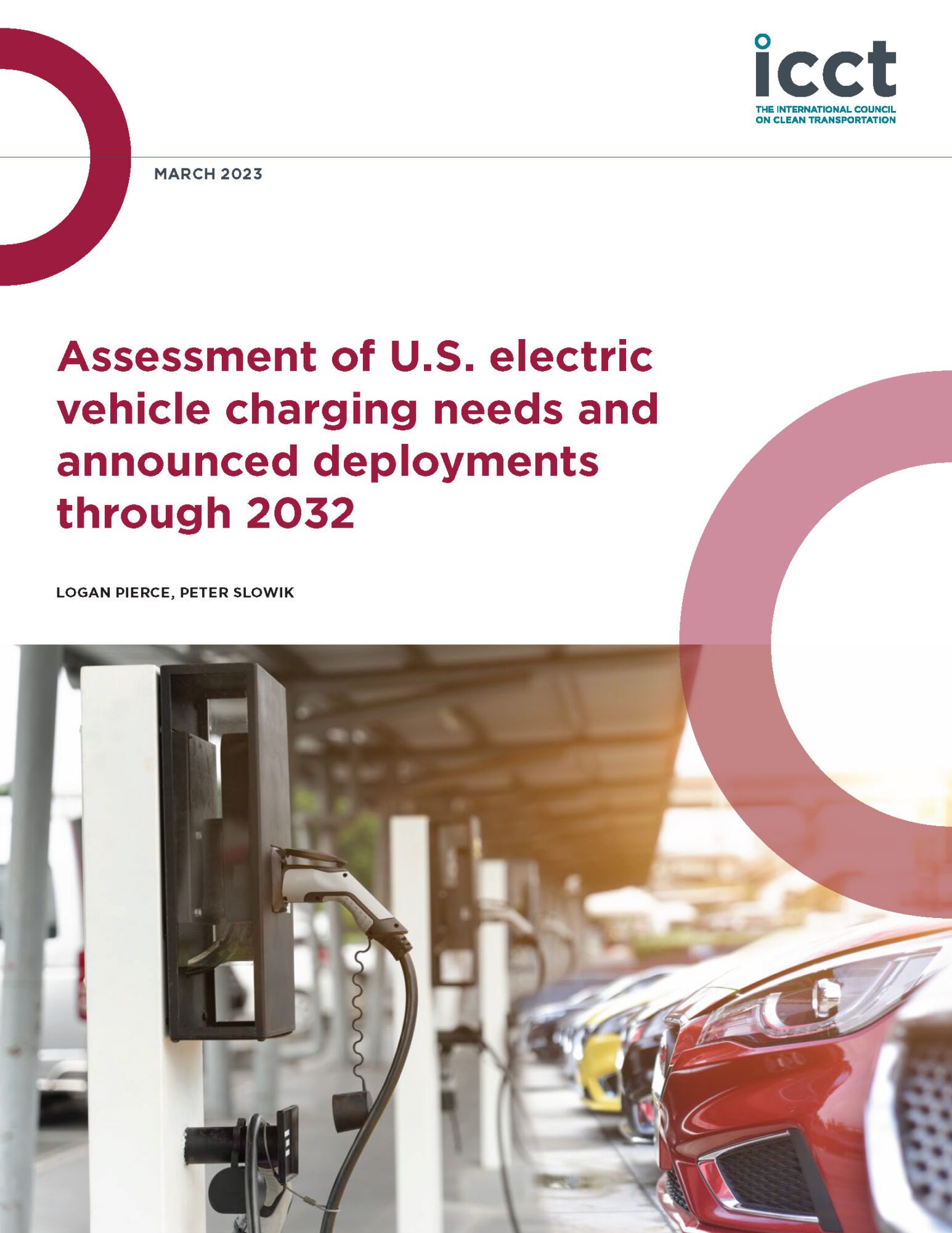Assessment of U.S. electric vehicle charging needs and announced deployment through 2032
Blog
Up to speed: Why the pace of U.S. public charging deployment is set to heat up
At the end of August, the United States reached an important milestone—nearly 11,000 public fast charging sites up and running. Based on this pace of deployment, Bloomberg estimated that public fast charging stations will exceed the number of gas stations in the country by 2032. Beyond that, charging deployment is likely to accelerate. The ICCT has tracked hundreds of announcements of billions of dollars in new charging infrastructure investments from automakers, utilities, private charging companies, and federal and state governments.
So don’t be influenced by headlines that suggest the pace has been slow. The reality of the Biden administration’s National Electric Vehicle Infrastructure (NEVI) Formula Program is that (1) little of the $5 billion budget has been spent thus far and (2) it takes time to get these kinds of efforts off the ground. As of May 2024, only about $300 million in NEVI funding had been awarded—6% of the program’s budget.
Through the challenging phase
The first NEVI-funded chargers were activated in December 2023, almost 2 years after the program began, and that was for good reason. A lot of one-time, upfront planning and rulemaking was needed. That work is done now, and it won’t be repeated when deploying the thousands of chargers to come.
The NEVI program created the Joint Office of Energy and Transportation to coordinate and plan the deployment of federally funded charging infrastructure, and it issued NEVI program guidance in February 2022. After that, state governments had to develop individual NEVI plans detailing how they would build out charging stations along interstates and major highways that they designated as Alternative Fuel Corridors (AFCs). The Joint Office also proposed minimum standards and requirements for NEVI-funded charging stations. Once the Joint Office reviewed and approved states’ NEVI plans and finalized the minimum standards in February 2023, it was time for state governments to solicit applications from charging companies, review the applications, award contracts to build charging stations, and begin construction.
The construction process consists of identifying and securing land, creating engineering designs, acquiring permits, coordinating with utilities and potentially upgrading grid infrastructure, constructing the site (this includes trenching through concrete, laying conduit and running electrical wires to the power source, and setting the foundation for the chargers), installing chargers, and activating the chargers once installed. If more on-site power is needed, it can take 18 months or more for charging to be installed and activated once a site is selected. Still, construction timelines can and should get faster as charging providers implement more efficient processes such as prefabrication.
With the minimum standards finalized in February 2023, we might have expected the first NEVI-funded chargers to come online 18 months later, in August 2024. It’s therefore impressive that the first station opened 8 months before that, in December 2023, and as of May 2024, there were eight stations open in six states.
NEVI plans will need to be updated annually, and awarding contracts will need to be done on a recurring basis. But now that states have done it, they should be able to move through these steps faster. That said, several states, such as Louisiana, Florida, and Nebraska, have not yet even asked for bids, while others are already on their second round of bids.
New funding and best practices
Upcoming changes to the Charging and Fueling Infrastructure program—the other large source of federal funding for electric vehicle charging—will also help accelerate deployment. Under the new round of funding, the list of eligible projects is being expanded. Charging stations can now be located up to 5 miles from an AFC, instead of 1 mile, and a broader variety of projects like semi-public charging at multifamily homes and long-dwell-time chargers along AFCs are eligible, as well. This means that more sites can qualify for federal funding and projects that were previously cost-prohibitive may get funded.
States are also implementing best practices to accelerate charging deployment through NEVI. Illinois is providing applicants with pre-approved, eligible sites for charging deployment, and Indiana is prioritizing applicants that have had prior engagement with utilities, such as receiving a preliminary engineering study of a desired site. Several state legislatures have also signed bills enabling utilities to play a larger role in charging infrastructure deployment by including electric vehicle charging investments in their general rate base and setting maximum timelines for both responding to charging project requests and connecting charging stations to the grid. Additionally, the federal government allows expedited environmental reviews for charging projects and these projects are exempt from historic preservation reviews. Together with these new state actions, we see that many stakeholders are devising smart ways to streamline and accelerate charging deployment.
All of this means that current and prospective electric vehicle drivers can be confident that a lot of charging infrastructure is actively being deployed, and there’s even more in the pipeline to accelerate current trends.
Authors
Related Publications
Assessment of U.S. electric vehicle charging needs and announced deployment through 2032
Evaluates the projected growth and charging needs of the U.S. BEV fleet through 2032 against the future supply of chargers, based on an analysis of more than 160 announcements of charging infrastructure deployments.



